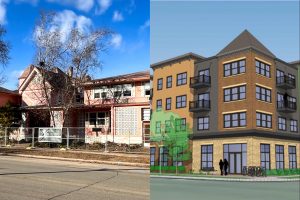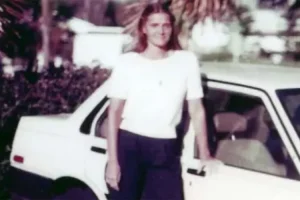Biracialism: not so black-and-white
April 1, 2015
On Thursday, March 26, the Intercultural Organization Promoting Awareness (IOPA) hosted an event titled “Between Boxes: Voicing the Multiracial Experience” presented by Vanessa Roberts, a keynote speaker who aims to raise awareness for multi-ethnic identities and interracial relationships.
Roberts received her Bachelor’s Degree at Colorado Mountain College and her Master’s Degree at New York University. She is currently attending the University of Colorado to obtain her PhD. She considers herself an “artivist” which is an artist and an activist combined. She gave herself the title because she enjoys expressing her views of multi-ethnic activism through her artistic and theatrical talents.
Roberts started her presentation by giving a performance called “I Didn’t Know I Was Black.” This performance incorporated comedic elements and explained how she was called “black” her entire life by her peers, so she believed she was. However, Roberts is actually a biracial woman with a German mother and an African American father.
Her experiences throughout her middle and high school years paved the way for her college and graduate school careers. Due to the fact that her true ethnicity was rarely acknowledged while she was growing up, Roberts decided to pursue a path in college that would allow her to raise awareness for multi-ethnic individuals.
The majority of Roberts’ presentation focused on the history of multiracial activism and advocacy. Here are some of the major events that she covered:
1607 – 1st North American English colony established
1967 – Loving v. Virginia established legal legitimacy of interracial (heterosexual) unions
1978 – iPride founded in San Francisco – an organization celebrating and supporting intercultural and interracial relationships
1981 – Biracial Family Network in Chicago (BFN)
1983 – Interracial Family Circle of Washington, D.C.
1987 – Multiracial Americans of Southern California (MASC)
1988 – Association of Multi-Ethnic Americans (AMEA)
1991 – Project RACE (Reclassify All Children Equally)
1992 – HAPA Issues Forum (HIF)
Roberts incorporated audience participation throughout her presentation. She had people call out names of biracial celebrities, and there was a list of about 25 people at the end of the activity. She noted that a few years ago when she did the same activity, they had only three names after about five minutes. This shows that biracial awareness has steadily been increasing in the past few years.
Before the year 2000, biracial individuals could not check more than one box on the U.S. Census, and they were required to check the box that was the color of their skin. Today, biracial individuals no longer have to be “between boxes” as the presentation’s name implied, and they are able to check more than one box on the U.S. Census. This has been a huge advancement for the awareness of multi-ethnic identities because it allowed people to identify with the race(s) that they feel they best fit into and relate with.





